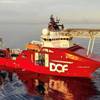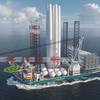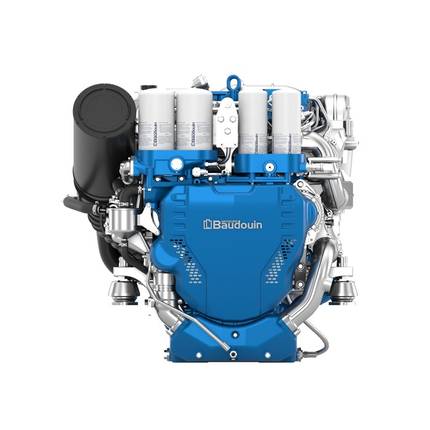Offshore Market 2000: In like a lamb, out like a lion?
While levels of consolidation in industry worldwide approached breakneck speed in the mid- to late-90s, it seems the marine industry, particularly the offshore products and services sector, was slower in acting. This is not to say no activity took place - witness the R&B Falcon's and Transocean Sedco Forex's of the world for proof. Rather, it is the opinion of some analysts that not enough consolidation of resources was completed to make the sector nimble and diverse enough to successfully weather downturns and capitalize on upturns. The positive mood at the Howard Weil energy conference in New Orleans perhaps best captures the hope for the coming years. While U.S. oil drillers expect weaker or flat first quarter earnings, most see revenues picking up later in the year as recent high oil prices trickle down to the service sector. According to sector company executives, the recovery is set to begin in the second half of this year for most, and improve markedly in 2001 as major, independent and national oil firms ramp up oil and gas exploration and production spending. "The year 2000 will be a transition year, the later we get into the year the better things will become...We troughed in the third quarter (1999)," Robert Rose, chairman, president and CEO of offshore driller Global Marine. "But we have to wait to 2001 before we start having the kind of earnings we had in 1997, which was a recent peak." While oil has dropped from a high of $34 to $25 in just a few weeks earlier this year, oil firms will be closely monitoring the stability of the price before committing more dollars to E&P activity, which is one barometer for offshore and other marine related companies. Rose said he was comfortable with Wall Street estimates that Global Marine's first quarter earnings will fall to six cents a share from 21 cents last year. But he also agreed with expectations that full year 2000 earnings are set to jump to 55 cents a share from 51 cents in 1999. But by 2001, the driller's EPS is seen shooting up to $1.19, a pattern other firms are likely to follow. Gene Isenberg, chairman and CEO of Nabors Industries said his firm's first quarter earnings should be close to last year's 12 cents per share, but said he sees significant upside potential in subsequent quarters. Year 2000 per share profit is put by analysts at 77 cents versus 23 last year. Bruce Knutson, equity analyst with Minneapolis-based First American Asset Management said sequential earnings growth may start as late as the fourth quarter or first quarter of 2001 for firms like Diamond Offshore, Transocean Sedco Forex and Santa Fe International. Their semi-submersible rigs suffer from low utilization rates now, he said, but added: "When those start working, their full fleets start to work and then you see some revenue." Yet others like ENSCO International Inc. were likely to show earnings improvement as early as the second quarter 2000, due to heavy exposure to the Gulf of Mexico -- the market with the strongest recovery rate to date, he added. Andrew Szescila, senior vice-president at Baker Hughes, the third largest U.S. oil services firm, said oil majors, independents and national oil companies as a group are planning to hike expenditures between 15 to 20 percent. "This is a significant opportunity for the service industry. There's an estimate about 40 additional rigs will show up in international markets between now and July 1st," he added. Santa Fe International President and CEO Stedman Garber told the meeting his firm eyes incremental earnings of about 31 cents for every $5,000 increase in rig day rates. Calling 1999 "that lousy year", he said his firm will focus on international markets, which "still have a long way to go." Marine Drilling, one of few expected to turn in a first quarter profit versus a loss in last year's corresponding period, said it will capitalize on the strength of the Gulf of Mexico market where it is the fourth largest rig operator. Each $1,000 rise in jackup day rates there should add six cents to EPS, leaving the firm topping rivals, officials said. For Global Marine, diversification in terms of geography will help hedge its future. For example, West Africa comes in second place to the Gulf of Mexico in revenue generation, Rose said, but the North Sea still lags due to higher oil production costs and as it is dominated by major oil firms busy with post-merger reorganization. "While all that was going on, they were not drilling that many wells. We call it consolidation paralysis," Rose said. "The major oil companies are getting back into the game…their activity levels will be greater this year," he added.-(staff and wire reports)










